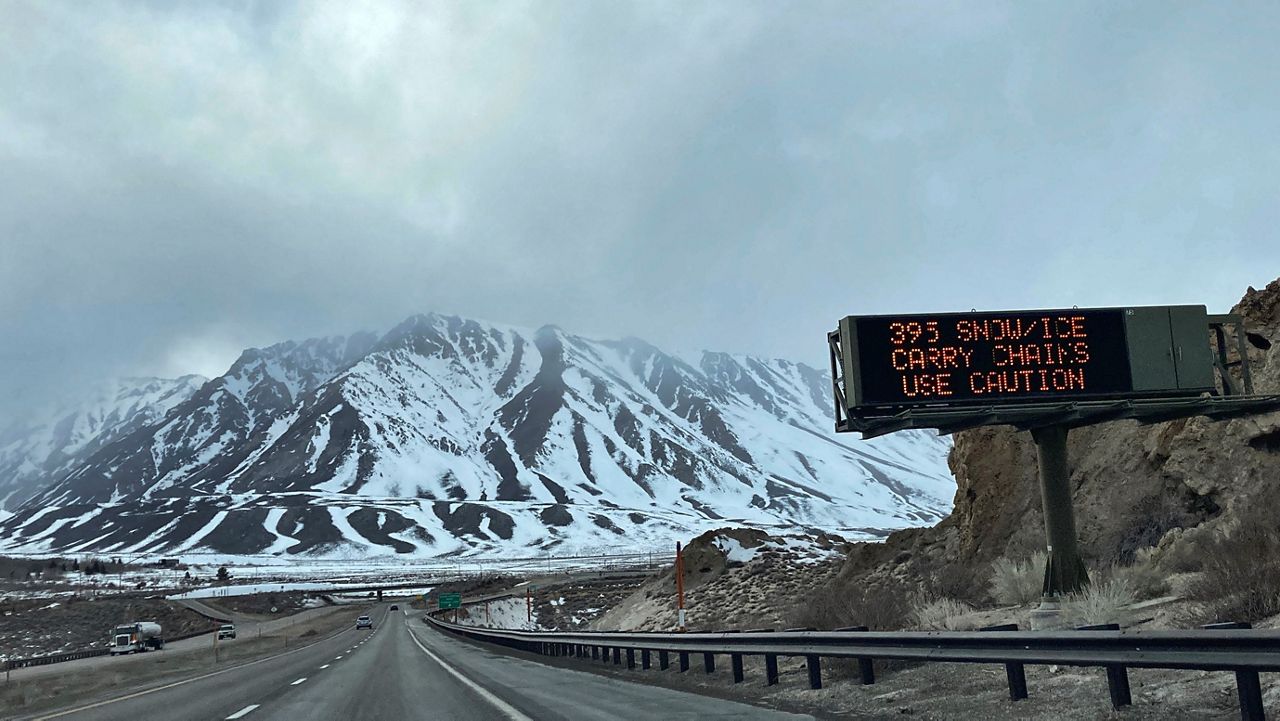LOS ANGELES — Following a string of nine atmospheric rivers that deluged the state in December and January, the snowpack that most directly affects the water supply for LA residents is well above normal. According to the first survey of the year from the Los Angeles Department of Water and Power, the Eastern Sierra snowpack was 264% of normal as of Feb. 1 and 168% of normal for April 1, when snowpack is at its peak in the Sierra Nevada mountains.
Even so, local officials caution it is too soon to tell how the abundance may affect the water supply during the coming dry season.
“Although the latest available data from the Eastern Sierra shows a promising snowpack, resulting runoff into our Los Angeles Aqueducts may differ from the current snowpack conditions due to prolonged dry conditions from the drought,” an LADWP official told Spectrum News 1. “We are closely monitoring supply conditions as they continue to develop over the next couple months.”
Like the rest of the state, LA is in the midst of a megadrought that has prompted mandatory conservation measures. Last June, the city imposed new restrictions for residents that limited outdoor watering to two days per week following the driest January, February and March in California recorded history.
LADWP has multiple sources of water, 90% of which is imported from the LA Aqueduct fed with snowmelt from the Eastern Sierra mountains, the Lake Oroville and San Luis reservoirs in the northern part of the state and the Colorado River Aqueduct that is experiencing historic lows.
LADWP conducted its snowpack measurements in five different areas in the Eastern Sierras, including Mammoth Lakes, Rock Creek, Bishop, Big Pine and Cottonwood, all of which were well above 200% of normal for Feb. 1. The agency defines normal based on readings taken from 1971 to 2020. It will conduct two additional snowpack surveys this season on March 1 and April 1.
The average water content for all the Eastern Sierra snow courses LADWP measured was 31.3 inches. The snow’s water content, or the amount of liquid water contained in the snow if it were to melt, is a critical number for water managers who use it to predict the spring and summer runoff that determines water supplies for the coming year. About one third of the state’s water supply comes from snowpack runoff.
In an assessment released Wednesday, LADWP reported that Los Angeles rainfall is 177% of normal for the year so far, at 15.35 inches. The water year begins Oct. 1, when the wet season typically starts. Los Angeles averaged 11.7 inches of annual rainfall annually from 1944 to 2021, according to the LA Almanac, though 2021-2022 and 2020-2021 were significantly below average, seeing just 10.31 inches and 5 inches, respectively.
The LADWP Eastern Sierra snowpack reading is higher than the California average for the 260+ snow courses the state’s Department of Water Resources measures each winter and early spring to determine how much water will melt and run off to reservoirs in the warmer months. The state snowpack was 193% of average for Feb. 1 and 137% of average for April 1, according to the Department of Water Resources.
The Metropolitan Water District of Southern California is currently evaluating water supply conditions for the State Water Project system that supplies a portion of LADWP’s water, as well as the Colorado River basin, to determine how much water it will make available to cities throughout the state.
In January, the State Water Project said it would boost water deliveries by 1.27 million acre-feet in 2023 — enough to support the indoor- and outdoor-watering needs of more than 4 million households a year. The decision came after a series of winter storms allowed the state to capture and store enough water in its reservoirs to deliver 30% of requested water supplies because of “extreme above average” precipitation, the agency said.
Just prior to the storms, in December, the DWR indicated it would only provide 5% of what had been requested because of below-average precipitation.
The newly increased water allocations from the State Water Project, which delivers water throughout California, including LA, only account for current reservoir storage and do not include expected runoff from the Sierra Nevada snowpack. Depending on the results of upcoming snow surveys in March and April, the agency could update its water delivery allocations, though it warned California could see warm and dry conditions in the lead up to the end of the state’s wet season April 1. Higher-than-average temperatures could cause the snowmelt to evaporate or be absorbed into the ground before it reaches California’s reservoirs.
“Southern California has long recognized the risk and impact of drought, and the region has made considerable investments in diversifying the region’s water supply portfolio, developing storage and continuing its outreach on water conservation,” the LADWP official said. “Southern California still relies on the Colorado River as a major component of its portfolio and conditions there still remain dire.”
California failed to reach an agreement last week with the six other Western states that import water from the Colorado River as they face a U.S. Bureau of Reclamation deadline to cut their collective use by as much as 4 million acre-feet per year. California declined to reduce its draws from the Colorado River by the 25% Arizona, Nevada, New Mexico, Colorado, Utah and Wyoming proposed. Instead, California has offered to reduce its use by 9%.



